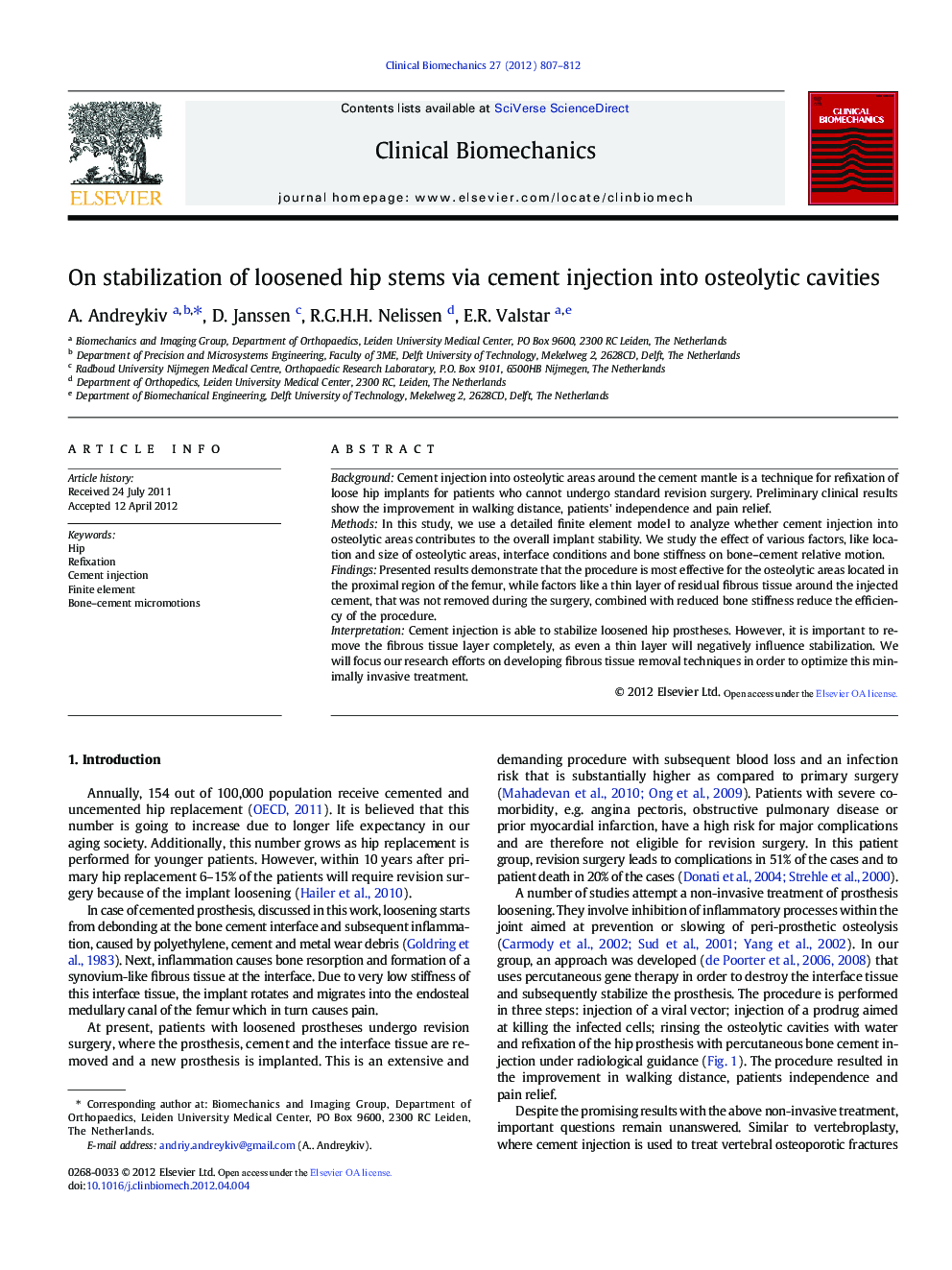| Article ID | Journal | Published Year | Pages | File Type |
|---|---|---|---|---|
| 6205162 | Clinical Biomechanics | 2012 | 6 Pages |
BackgroundCement injection into osteolytic areas around the cement mantle is a technique for refixation of loose hip implants for patients who cannot undergo standard revision surgery. Preliminary clinical results show the improvement in walking distance, patients' independence and pain relief.MethodsIn this study, we use a detailed finite element model to analyze whether cement injection into osteolytic areas contributes to the overall implant stability. We study the effect of various factors, like location and size of osteolytic areas, interface conditions and bone stiffness on bone-cement relative motion.FindingsPresented results demonstrate that the procedure is most effective for the osteolytic areas located in the proximal region of the femur, while factors like a thin layer of residual fibrous tissue around the injected cement, that was not removed during the surgery, combined with reduced bone stiffness reduce the efficiency of the procedure.InterpretationCement injection is able to stabilize loosened hip prostheses. However, it is important to remove the fibrous tissue layer completely, as even a thin layer will negatively influence stabilization. We will focus our research efforts on developing fibrous tissue removal techniques in order to optimize this minimally invasive treatment.
